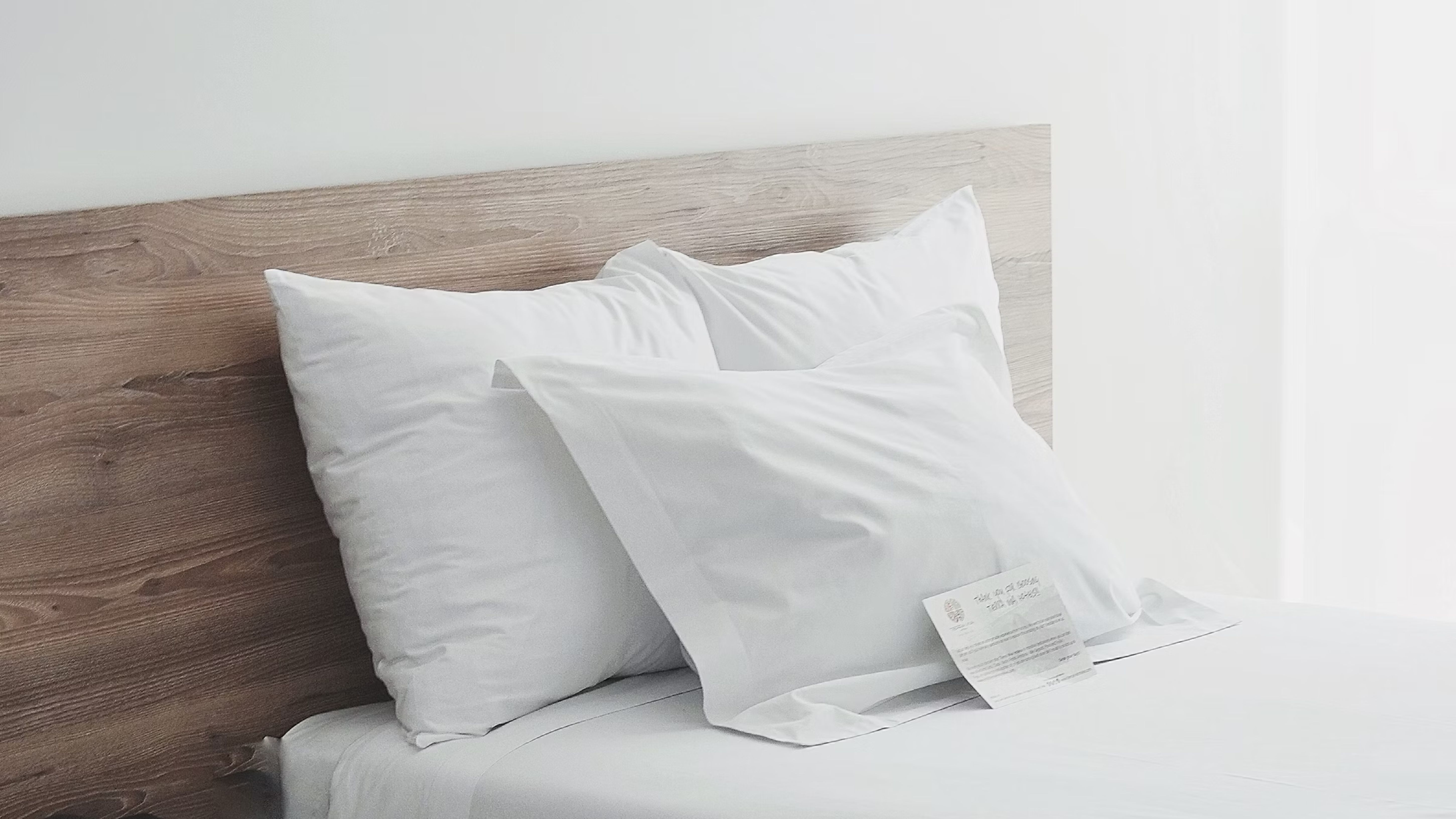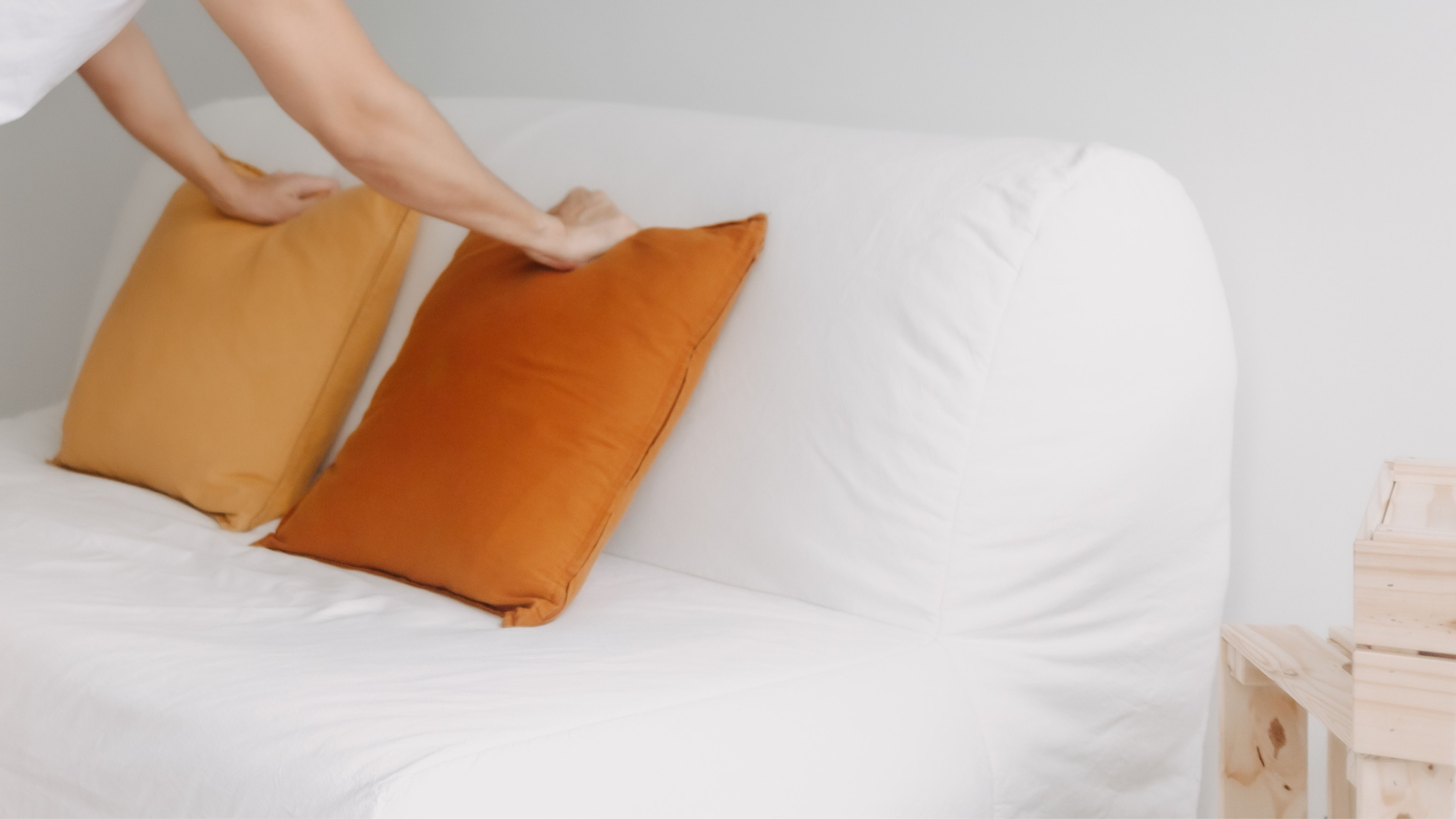Types of Pillows: The Ultimate Guide

Choosing the right pillow is crucial for a restful night's sleep. With so many types of pillows and pillow inserts available, finding the one that best suits your sleeping style and needs can significantly improve your sleep quality and overall health. This guide explores the different types of pillows, from memory foam to latex pillows, and their benefits to help you find your best pillow.
10 Different Types of Pillows
-
Memory Foam Pillows: Known for their ability to contour to the head and neck, providing excellent support and pressure relief. Shredded memory foam pillows, in particular, offer adjustability in firmness.
-
Latex Pillows: Made from natural latex rubber, these pillows provide firm support and maintain their shape well. A latex pillow is also resistant to dust mites and mold, making it a good choice for allergy sufferers.
-
Down Pillows: These pillows are filled with the soft feathers from the undercoating of ducks or geese, offering a plush and comfortable sleep surface. Ideal for those who love a soft, enveloping pillow.
-
Feather Pillows: Similar to down but include feathers with quills, offering a slightly firmer feel than down.
-
Buckwheat Pillows: Filled with buckwheat hulls that conform to your shape and provide excellent support.
-
Body Pillows: Long pillows that provide full-body support, ideal for side sleepers and pregnant women.
-
Contour Pillows: Designed with a curve to support the head and neck, often used for neck pain relief.
-
Cervical Pillows: Specifically designed to support the cervical spine, promoting proper alignment.
-
Bolster Pillows: A bolster pillow is a cylindrical pillow that provides support under the knees or back, useful for additional support.
-
Sleep Apnea Pillows: Designed to help reduce the symptoms of sleep apnea by encouraging proper sleeping positions.
Notable Pillow Materials
-
Bamboo: Noted for their breathability and natural materials, bamboo pillows often feature a bamboo fiber outer shell with a memory foam or other types of fill inside.
-
Microbeads: Filled with tiny polystyrene beads, offering good support and adaptability, commonly used in travel pillows.
-
Water: Allow for customizable support by adjusting the water level, which can be particularly beneficial for addressing neck pain.
Pillows for Every Sleeping Position

-
Side Sleepers: Typically benefit from memory foam pillows or body pillows that provide adequate support to the head, neck, and shoulders, aligning the spine.
-
Back Sleepers: Best suited with thin latex pillows or contour pillows that support the natural curvature of the spine.
-
Stomach Sleepers: Need low-profile, soft pillows, like feather pillows, to minimize neck strain.
-
Combination Sleepers: Should look for versatile, medium-firm pillows that offer comfort in various positions.
Specialty Pillows for Health Concerns
-
Orthopedic Pillows: Specifically designed to correct body positioning, cervical pillows fall into this category, offering targeted support for neck pain.
-
Pregnancy Pillows: These are full-body pillows that provide support to the stomach, back, and legs, helping expectant mothers find a comfortable sleeping position.
-
Cooling Pillows: Memory foam pillows with cooling gel or breathable bamboo covers are excellent for those who sleep hot.
-
Anti-Snore Pillows: Sleep apnea pillows are designed to help keep airways open, often beneficial for those with sleep apnea.
Pillow Care and Maintenance

Regular cleaning and proper maintenance can extend the life of your pillows. While memory foam and latex pillows should not be washed in a machine, their covers can be removed and cleaned according to the manufacturer's instructions. Down and feather pillows can be machine washed on a gentle cycle and dried thoroughly.
How to Choose the Right Pillow

Consider your sleeping position, material preferences, and any health issues like neck pain or sleep apnea when selecting a pillow. Pillow shapes and sizes, such as queen pillows or bolster pillows, also play a role in comfort and should match your bed size and sleeping habits.

Frequently Asked Questions
What is a body pillow?
A body pillow is a long, narrow pillow designed to be cradled or hugged while sleeping. It's significantly longer than standard pillows, allowing individuals to support various parts of their body simultaneously. Body pillows can vary in size, but they are typically around 4 to 6 feet in length, making them suitable for full-body support.
How often should I replace my pillow?
Pillows should generally be replaced every 1 to 2 years to ensure they remain supportive and hygienic. However, the lifespan can vary based on the material and how well the pillow is cared for. Signs that you need a new pillow include lumps, flatness, discomfort, or waking up with neck pain.
Can the right pillow help reduce neck pain?
Yes, choosing the correct pillow can significantly reduce or prevent neck pain. A pillow that properly supports your head and neck in alignment with your spine is crucial. Memory foam, latex, and cervical pillows are often recommended for those with neck issues.
How do I choose the best pillow for my sleeping position?
Side sleepers generally benefit from a firmer pillow to fill the gap between the head and mattress, maintaining spine alignment. Back sleepers may prefer a medium-firm pillow that supports the natural curve of the spine. Stomach sleepers need a soft, flat pillow to avoid neck strain, or even no pillow at all.
Are expensive pillows worth the investment?
While a higher price doesn't always guarantee a better pillow, investing in a quality pillow can improve your sleep quality and overall health. Expensive pillows often offer superior materials, ergonomic designs, and durability. However, the best pillow for you is one that meets your specific needs and preferences, regardless of price.
Conclusion

From buckwheat pillows for firm support to plush feather pillows and supportive memory foam pillows, the best pillow for you is one that meets your specific needs for comfort, support, and health. By understanding the various types of pillows and their features, you can make an informed choice that leads to better sleep and happier mornings.



